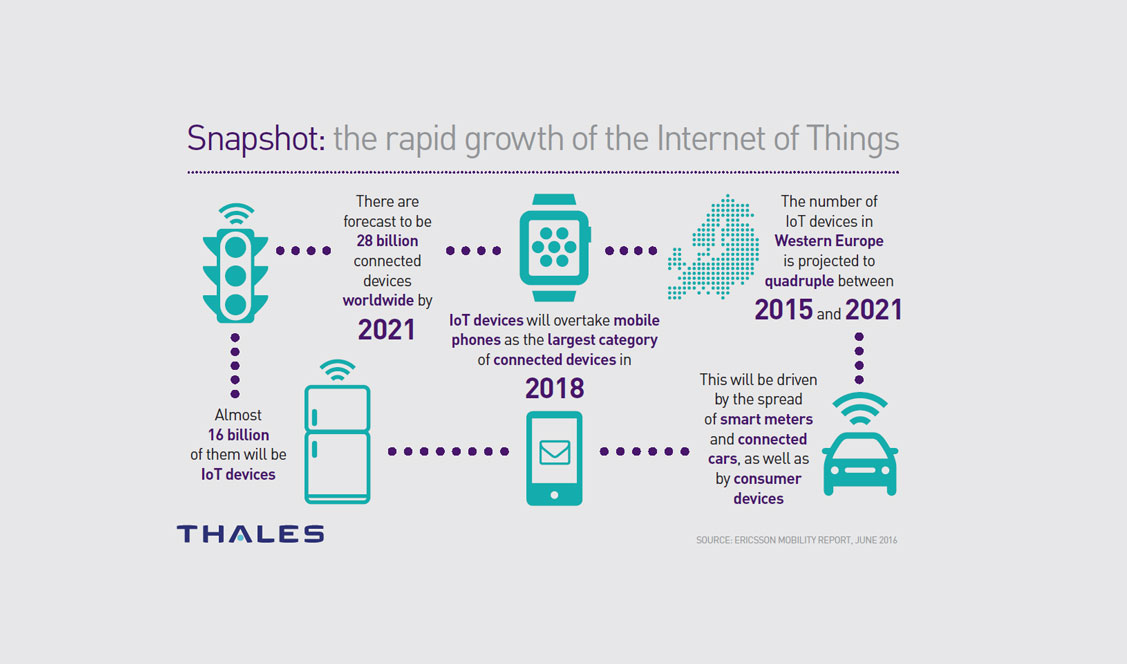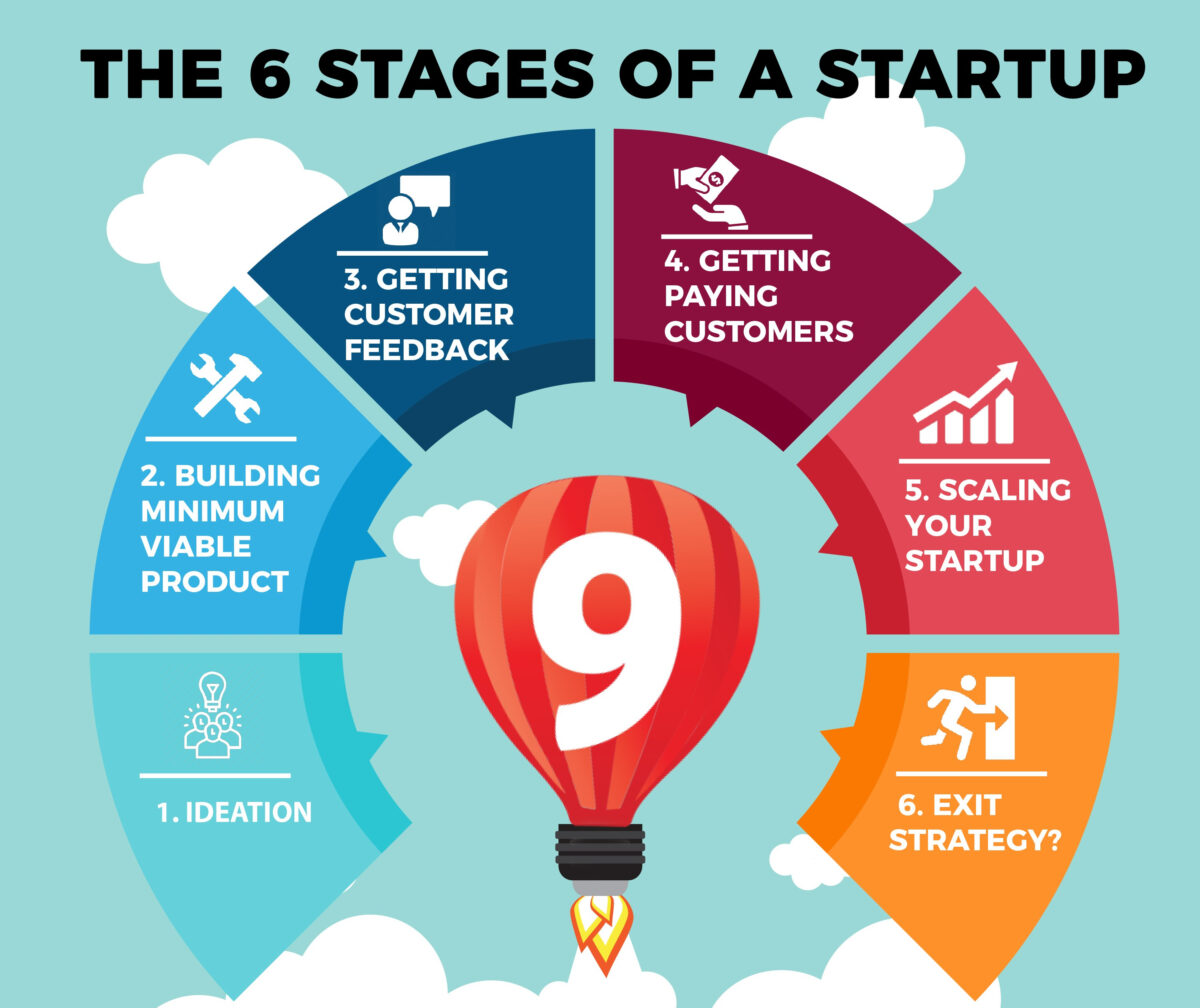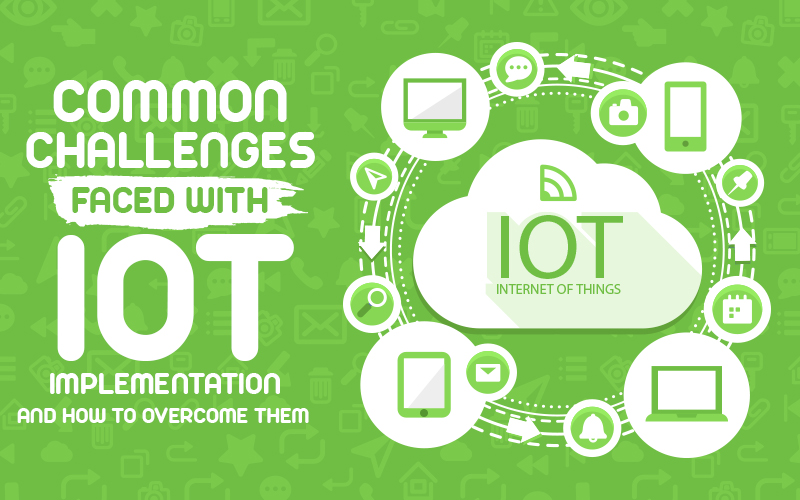Leveraging the Power of IoT to Drive Business Growth
The Internet of Things (IoT) has revolutionized the way businesses operate, and SaaS startups are no exception. By integrating IoT devices into their products and services, SaaS startups can drive business growth, improve customer engagement, and increase revenue streams. IoT device development is a critical aspect of this integration, enabling SaaS startups to create innovative solutions that meet the evolving needs of their customers.
According to a report by MarketsandMarkets, the global IoT market is expected to grow from $190 billion in 2020 to $1.4 trillion by 2027, at a Compound Annual Growth Rate (CAGR) of 26.9%. This growth is driven by the increasing adoption of IoT devices across various industries, including manufacturing, healthcare, and transportation. SaaS startups that leverage IoT device development can tap into this growing market and gain a competitive edge.
IoT device development enables SaaS startups to create smart products and services that can collect and analyze data, providing valuable insights into customer behavior and preferences. This data can be used to improve customer engagement, personalize experiences, and drive business growth. For instance, a SaaS startup that develops an IoT-enabled smart home security system can collect data on user behavior and preferences, enabling them to offer personalized security solutions and improve customer satisfaction.
Moreover, IoT device development can help SaaS startups to increase revenue streams by creating new business models and revenue streams. For example, a SaaS startup that develops an IoT-enabled industrial automation system can offer subscription-based services, such as predictive maintenance and remote monitoring, to generate recurring revenue.
In conclusion, IoT device development is a critical aspect of SaaS startup growth, enabling them to drive business growth, improve customer engagement, and increase revenue streams. By leveraging the power of IoT, SaaS startups can create innovative solutions that meet the evolving needs of their customers and gain a competitive edge in the market.
How to Develop a Winning IoT Device Strategy for Your SaaS Startup
Developing a winning IoT device strategy is crucial for SaaS startups looking to leverage the power of IoT to drive business growth. A well-planned strategy can help SaaS startups to identify target markets, select the right hardware and software components, and design a user-friendly interface. In this section, we will provide a step-by-step guide on how to develop a winning IoT device strategy for your SaaS startup.
Step 1: Identify Target Markets
Identifying target markets is the first step in developing a winning IoT device strategy. SaaS startups need to conduct market research to identify the industries and applications that can benefit from IoT device development. For example, a SaaS startup that develops IoT-enabled industrial automation systems may target the manufacturing industry. By identifying target markets, SaaS startups can tailor their IoT device development to meet the specific needs of their customers.
Step 2: Select the Right Hardware and Software Components
Selecting the right hardware and software components is critical for IoT device development. SaaS startups need to choose components that are compatible with their IoT device strategy and can meet the specific needs of their customers. For example, a SaaS startup that develops IoT-enabled smart home security systems may choose hardware components that are compatible with popular smart home platforms. By selecting the right hardware and software components, SaaS startups can ensure that their IoT devices are reliable, secure, and easy to use.
Step 3: Design a User-Friendly Interface
Designing a user-friendly interface is essential for IoT device development. SaaS startups need to create an interface that is intuitive, easy to use, and provides a seamless user experience. For example, a SaaS startup that develops IoT-enabled industrial automation systems may design an interface that provides real-time monitoring and control of industrial processes. By designing a user-friendly interface, SaaS startups can improve customer adoption and retention, and increase revenue growth.
Step 4: Ensure Security and Scalability
Ensuring security and scalability is critical for IoT device development. SaaS startups need to ensure that their IoT devices are secure, scalable, and can meet the growing demands of their customers. For example, a SaaS startup that develops IoT-enabled smart home security systems may implement robust security measures to prevent hacking and data breaches. By ensuring security and scalability, SaaS startups can build trust with their customers and establish a strong reputation in the market.
By following these steps, SaaS startups can develop a winning IoT device strategy that drives business growth, improves customer engagement, and increases revenue streams. Remember to stay focused on your target markets, select the right hardware and software components, design a user-friendly interface, and ensure security and scalability.
Key Considerations for IoT Device Development in SaaS Startups
IoT device development is a critical aspect of SaaS startups, and there are several key considerations that must be taken into account to ensure success. In this section, we will highlight the key considerations for IoT device development in SaaS startups, including security, scalability, and interoperability, and provide tips on how to address these challenges.
Security is a top concern for IoT device development in SaaS startups. IoT devices are vulnerable to hacking and data breaches, which can compromise customer data and damage the reputation of the SaaS startup. To address this challenge, SaaS startups must implement robust security measures, such as encryption, secure authentication, and regular software updates. Additionally, SaaS startups must ensure that their IoT devices comply with relevant security standards and regulations, such as GDPR and HIPAA.
Scalability is another key consideration for IoT device development in SaaS startups. As the number of IoT devices increases, SaaS startups must ensure that their infrastructure can scale to meet the growing demands of their customers. To address this challenge, SaaS startups must design their IoT devices and infrastructure to be scalable, flexible, and adaptable to changing customer needs. Additionally, SaaS startups must ensure that their IoT devices can integrate with other systems and devices, such as cloud platforms and mobile apps.
Interoperability is also a critical consideration for IoT device development in SaaS startups. IoT devices must be able to communicate with other devices and systems, such as sensors, actuators, and cloud platforms. To address this challenge, SaaS startups must ensure that their IoT devices use standardized communication protocols, such as MQTT and CoAP, and can integrate with other devices and systems. Additionally, SaaS startups must ensure that their IoT devices are compatible with different operating systems and platforms, such as Android and iOS.
Other key considerations for IoT device development in SaaS startups include data management, analytics, and user experience. SaaS startups must ensure that their IoT devices can collect, process, and analyze large amounts of data, and provide valuable insights to customers. Additionally, SaaS startups must ensure that their IoT devices provide a seamless user experience, with intuitive interfaces and easy-to-use controls.
By considering these key factors, SaaS startups can develop IoT devices that meet the needs of their customers, drive business growth, and establish a strong reputation in the market. Remember to prioritize security, scalability, and interoperability, and ensure that your IoT devices are designed to be flexible, adaptable, and user-friendly.
Real-World Examples of Successful IoT Device Development in SaaS Startups
There are several real-world examples of successful IoT device development in SaaS startups that demonstrate the potential of IoT to drive business growth and improve customer engagement. In this section, we will showcase two examples of successful IoT device development in SaaS startups, August Smart Locks and Nest Learning Thermostat, and analyze what made them successful.
August Smart Locks is a SaaS startup that developed a smart lock system that can be controlled remotely using a mobile app. The system uses IoT technology to connect the lock to the internet, allowing users to grant access to guests, monitor who is entering and leaving the home, and receive notifications when someone tries to force entry. August Smart Locks was successful because it solved a real-world problem, providing users with a convenient and secure way to manage access to their homes.
Nest Learning Thermostat is another example of successful IoT device development in a SaaS startup. Nest developed a smart thermostat that can learn a user’s temperature preferences and adjust the temperature accordingly. The thermostat uses IoT technology to connect to the internet, allowing users to control the temperature remotely using a mobile app. Nest Learning Thermostat was successful because it provided users with a convenient and energy-efficient way to control their home’s temperature.
Both August Smart Locks and Nest Learning Thermostat demonstrate the potential of IoT device development to drive business growth and improve customer engagement in SaaS startups. By developing innovative IoT devices that solve real-world problems, SaaS startups can differentiate themselves from competitors, attract new customers, and increase revenue streams.
So, what made August Smart Locks and Nest Learning Thermostat successful? There are several factors that contributed to their success, including:
1. Solving a real-world problem: Both August Smart Locks and Nest Learning Thermostat solved real-world problems that users were facing. August Smart Locks provided users with a convenient and secure way to manage access to their homes, while Nest Learning Thermostat provided users with a convenient and energy-efficient way to control their home’s temperature.
2. Developing innovative IoT devices: Both August Smart Locks and Nest Learning Thermostat developed innovative IoT devices that used IoT technology to connect to the internet and provide users with remote control and monitoring capabilities.
3. Providing a seamless user experience: Both August Smart Locks and Nest Learning Thermostat provided users with a seamless user experience, with intuitive interfaces and easy-to-use controls.
By following these factors, SaaS startups can develop successful IoT devices that drive business growth and improve customer engagement.
Best Practices for Integrating IoT Devices with SaaS Applications
Integrating IoT devices with SaaS applications is a critical step in unlocking the full potential of IoT device development in SaaS startups. In this section, we will discuss best practices for integrating IoT devices with SaaS applications, including data management, analytics, and user experience, and provide tips on how to ensure seamless integration.
Data Management
Data management is a critical aspect of integrating IoT devices with SaaS applications. IoT devices generate vast amounts of data, which must be collected, processed, and analyzed to provide valuable insights to customers. To ensure seamless integration, SaaS startups must develop a robust data management strategy that includes data collection, processing, and analysis.
Analytics
Analytics is another critical aspect of integrating IoT devices with SaaS applications. IoT devices generate vast amounts of data, which must be analyzed to provide valuable insights to customers. To ensure seamless integration, SaaS startups must develop a robust analytics strategy that includes data analysis, reporting, and visualization.
User Experience
User experience is a critical aspect of integrating IoT devices with SaaS applications. IoT devices must provide a seamless user experience, with intuitive interfaces and easy-to-use controls. To ensure seamless integration, SaaS startups must develop a robust user experience strategy that includes user interface design, user experience testing, and user feedback analysis.
Best Practices for Integration
To ensure seamless integration of IoT devices with SaaS applications, SaaS startups must follow best practices, including:
1. Develop a robust data management strategy that includes data collection, processing, and analysis.
2. Develop a robust analytics strategy that includes data analysis, reporting, and visualization.
3. Develop a robust user experience strategy that includes user interface design, user experience testing, and user feedback analysis.
4. Use standardized communication protocols, such as MQTT and CoAP, to ensure seamless communication between IoT devices and SaaS applications.
5. Use cloud-based platforms, such as AWS and Azure, to ensure scalability and flexibility in IoT device development.
By following these best practices, SaaS startups can ensure seamless integration of IoT devices with SaaS applications, and unlock the full potential of IoT device development.
Overcoming Common Challenges in IoT Device Development for SaaS Startups
IoT device development for SaaS startups can be challenging, and there are several common challenges that must be overcome to ensure success. In this section, we will identify common challenges in IoT device development for SaaS startups, such as hardware and software compatibility issues, and provide solutions on how to overcome them.
Hardware and Software Compatibility Issues
One of the most common challenges in IoT device development for SaaS startups is hardware and software compatibility issues. IoT devices must be compatible with a wide range of hardware and software platforms, including operating systems, devices, and networks. To overcome this challenge, SaaS startups must develop a robust compatibility testing strategy that includes testing for compatibility with different hardware and software platforms.
Security Challenges
Security is another common challenge in IoT device development for SaaS startups. IoT devices are vulnerable to hacking and data breaches, which can compromise customer data and damage the reputation of the SaaS startup. To overcome this challenge, SaaS startups must develop a robust security strategy that includes encryption, secure authentication, and regular software updates.
Scalability Challenges
Scalability is another common challenge in IoT device development for SaaS startups. IoT devices must be able to scale to meet the growing demands of customers, and SaaS startups must develop a robust scalability strategy that includes cloud-based platforms and distributed architectures.
Solutions to Overcome Challenges
To overcome the common challenges in IoT device development for SaaS startups, SaaS startups must develop a robust strategy that includes:
1. Compatibility testing: Develop a robust compatibility testing strategy that includes testing for compatibility with different hardware and software platforms.
2. Security: Develop a robust security strategy that includes encryption, secure authentication, and regular software updates.
3. Scalability: Develop a robust scalability strategy that includes cloud-based platforms and distributed architectures.
4. Collaboration: Collaborate with other companies and organizations to share knowledge, resources, and expertise.
5. Continuous learning: Continuously learn and adapt to new technologies, trends, and best practices in IoT device development.
By following these solutions, SaaS startups can overcome the common challenges in IoT device development and ensure success in the market.
Measuring the Success of IoT Device Development in SaaS Startups
Measuring the success of IoT device development in SaaS startups is crucial to understanding the impact of IoT on business growth, customer engagement, and revenue streams. In this section, we will discuss the importance of measuring the success of IoT device development in SaaS startups, including key performance indicators (KPIs) such as customer adoption, retention, and revenue growth.
Key Performance Indicators (KPIs)
There are several KPIs that SaaS startups can use to measure the success of IoT device development, including:
1. Customer Adoption: This KPI measures the number of customers who adopt IoT devices and integrate them with SaaS applications.
2. Customer Retention: This KPI measures the number of customers who continue to use IoT devices and SaaS applications over time.
3. Revenue Growth: This KPI measures the increase in revenue generated by IoT device development and integration with SaaS applications.
4. Customer Satisfaction: This KPI measures the level of satisfaction customers have with IoT devices and SaaS applications.
5. Return on Investment (ROI): This KPI measures the return on investment of IoT device development and integration with SaaS applications.
Benefits of Measuring Success
Measuring the success of IoT device development in SaaS startups provides several benefits, including:
1. Improved Decision Making: By measuring the success of IoT device development, SaaS startups can make informed decisions about future investments and resource allocation.
2. Increased Efficiency: By measuring the success of IoT device development, SaaS startups can identify areas for improvement and optimize their development processes.
3. Enhanced Customer Experience: By measuring the success of IoT device development, SaaS startups can ensure that their customers are satisfied with their IoT devices and SaaS applications.
4. Competitive Advantage: By measuring the success of IoT device development, SaaS startups can gain a competitive advantage in the market by demonstrating their expertise and capabilities in IoT device development.
Best Practices for Measuring Success
To measure the success of IoT device development in SaaS startups, SaaS startups should follow best practices, including:
1. Establish Clear Goals and Objectives: SaaS startups should establish clear goals and objectives for IoT device development and integration with SaaS applications.
2. Use Relevant KPIs: SaaS startups should use relevant KPIs to measure the success of IoT device development and integration with SaaS applications.
3. Collect and Analyze Data: SaaS startups should collect and analyze data on IoT device development and integration with SaaS applications to measure success.
4. Continuously Monitor and Evaluate: SaaS startups should continuously monitor and evaluate the success of IoT device development and integration with SaaS applications to identify areas for improvement.
Future Trends and Opportunities in IoT Device Development for SaaS Startups
The IoT device development landscape is constantly evolving, and SaaS startups must stay ahead of the curve to remain competitive. In this section, we will explore future trends and opportunities in IoT device development for SaaS startups, including the rise of edge computing, artificial intelligence, and 5G networks.
Edge Computing
Edge computing is a trend that is gaining traction in the IoT device development space. Edge computing involves processing data at the edge of the network, closer to the source of the data, rather than in a centralized cloud or data center. This approach can reduce latency, improve real-time processing, and enhance overall system performance.
Artificial Intelligence
Artificial intelligence (AI) is another trend that is transforming the IoT device development landscape. AI can be used to analyze data from IoT devices, identify patterns, and make predictions. This can enable SaaS startups to develop more intelligent and autonomous IoT devices that can adapt to changing conditions and improve overall system performance.
5G Networks
5G networks are the next generation of wireless networks that promise faster speeds, lower latency, and greater connectivity. 5G networks will enable SaaS startups to develop IoT devices that can communicate with each other and with the cloud in real-time, enabling new use cases and applications.
Opportunities for SaaS Startups
The trends and technologies mentioned above present opportunities for SaaS startups to develop innovative IoT devices and solutions that can drive business growth, improve customer engagement, and increase revenue streams. Some of the opportunities include:
1. Developing edge computing-enabled IoT devices that can process data in real-time and improve system performance.
2. Using AI to analyze data from IoT devices and develop more intelligent and autonomous IoT devices.
3. Developing IoT devices that can take advantage of 5G networks and enable new use cases and applications.
Best Practices for Staying Ahead of the Curve
To stay ahead of the curve in IoT device development, SaaS startups should follow best practices, including:
1. Staying up-to-date with the latest trends and technologies in IoT device development.
2. Investing in research and development to explore new use cases and applications.
3. Collaborating with other companies and organizations to share knowledge and expertise.
4. Developing a culture of innovation and experimentation to encourage new ideas and approaches.







